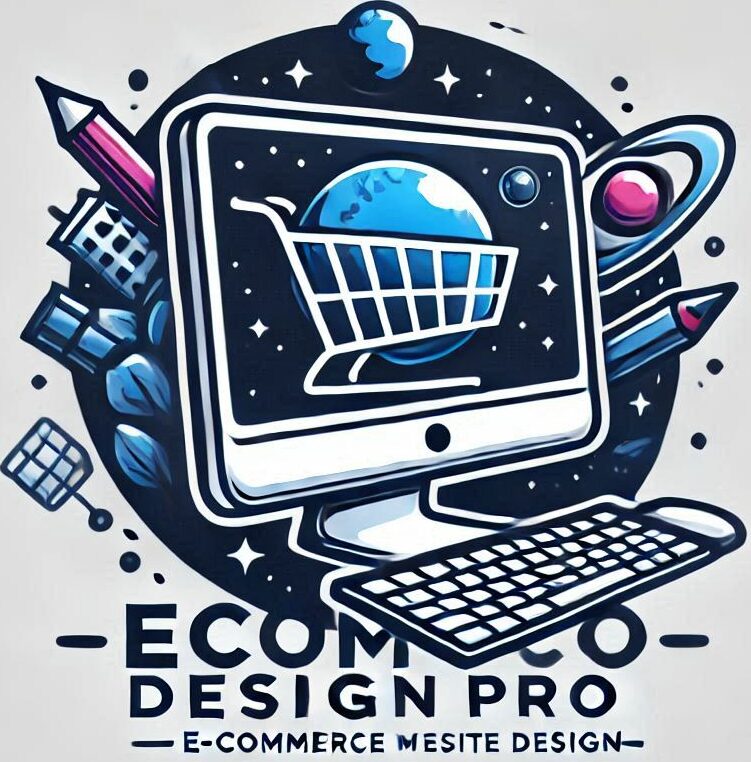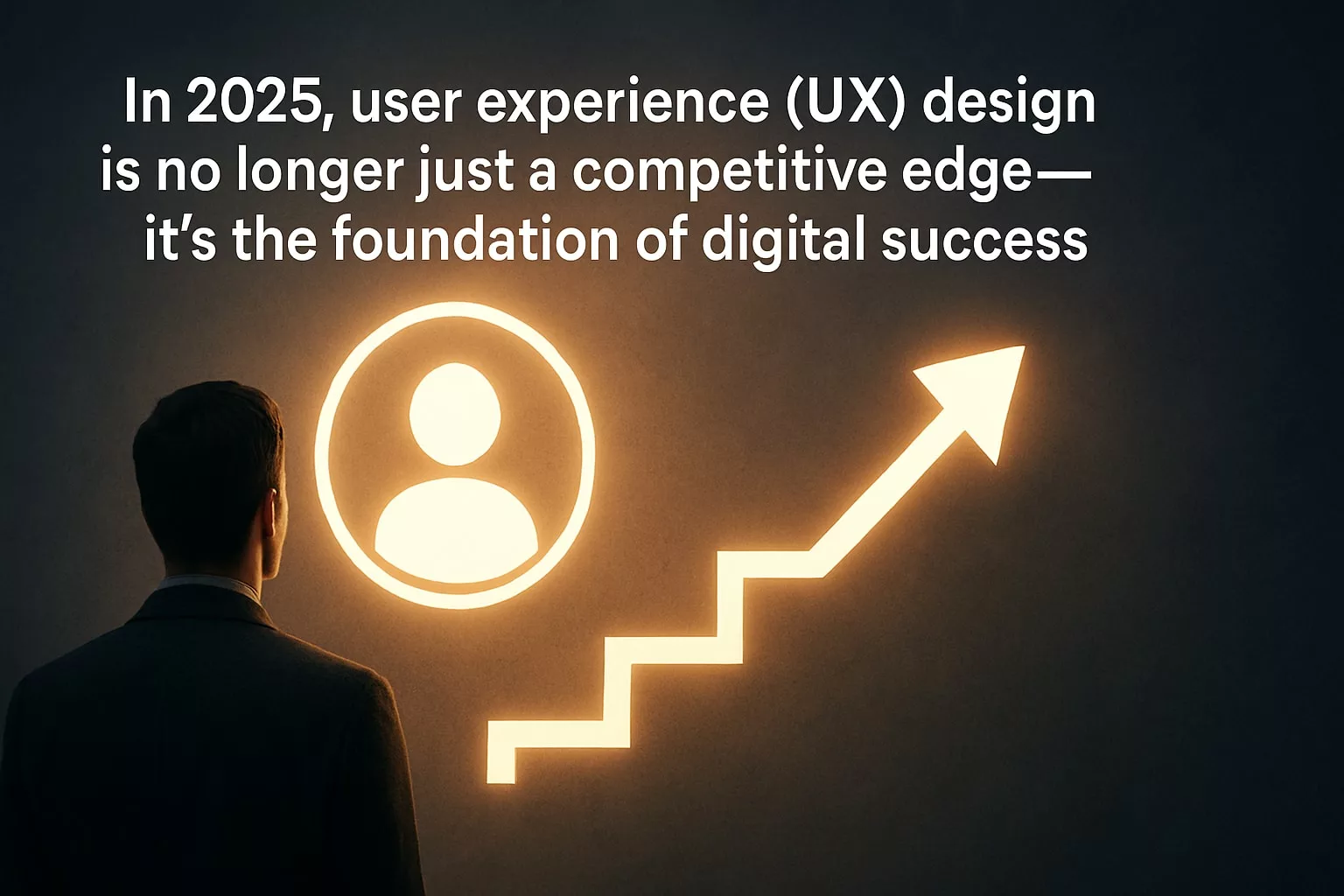In 2025, the digital landscape is evolving faster than ever, making user ux the cornerstone of online success. Businesses and creators must now prioritize seamless, meaningful interactions to meet rising user expectations.
This guide offers an up-to-date roadmap for mastering experience design. You will explore essential principles, emerging technologies, practical processes, and advanced UX trends.
Ready to elevate your skills and drive results? Apply these strategies to set yourself apart as a UX leader in 2025.
Understanding User Experience (UX) in 2025
User ux in 2025 is the cornerstone of digital product success. As technology and user expectations evolve, understanding the full scope of user ux is more critical than ever. This section explores how the concept has changed, why it matters now, and how it differs from related practices.

The Evolving Definition of UX
User ux is now seen as the complete, holistic experience people have when interacting with products, services, or systems. This goes far beyond just using a website or app. It includes every touchpoint, emotion, and expectation a person brings to the interaction.
Historically, user ux emerged from the field of Human Computer Interaction (HCI) in the 1980s and 1990s. Don Norman, a pioneer in usability, popularized the term “user experience” to describe the full range of perceptions and responses that arise from using a product. The ISO 9241-210 standard defines UX as “a person's perceptions and responses that result from the use or anticipated use of a product, system or service.”
Today, user ux is both a process (the act of designing) and the outcome (the experience itself). It requires expertise from design, psychology, engineering, and business. Teams must blend creative, technical, and research skills to create solutions that are not just functional, but also enjoyable and meaningful.
A modern approach to user ux recognizes the need for empathy, context, and adaptability. This means understanding not just what users do, but why they do it, and how their experiences can be improved across ever-changing technologies.
Why UX Matters More Than Ever
The importance of user ux has never been greater. In a digital-first world, a single negative experience can drive users away for good. According to recent research, 88% of users won’t return after a bad experience, highlighting the critical impact of user ux on retention.
A well-designed user ux leads to higher customer satisfaction, stronger brand loyalty, and increased conversion rates. Companies like Apple and Amazon have set new standards by prioritizing seamless, intuitive experiences that keep users engaged and coming back. In crowded markets, superior user ux becomes a key differentiator.
Benefits of investing in user ux include:
- Increased repeat visits and referrals
- Lower support and maintenance costs
- Higher revenue and customer lifetime value
By focusing on user ux, businesses can build trust, reduce friction, and create memorable interactions that stand out. The data is clear: organizations that prioritize user ux see measurable improvements in performance and growth.
UX vs. UI vs. CX
Understanding the difference between user ux, user interface (UI), and customer experience (CX) is essential for digital success. While user ux refers to the overall experience someone has with a product, UI focuses on the look and feel of the interface itself. CX, on the other hand, encompasses every interaction a customer has with a brand, from marketing to support.
Consider the example of a car dashboard:
- UI: The placement of buttons, screens, and controls
- User ux: How easy, comfortable, and satisfying it is to drive and interact with the dashboard
- CX: The entire journey, including sales, service, and ownership
| Aspect | Definition | Focus | Example |
|---|---|---|---|
| UX | Overall experience | Usability, emotions | Ease of using dashboard |
| UI | Visual/interface | Layout, design | Button placement |
| CX | Customer journey | End-to-end process | Buying, using, servicing |
For digital products, synergy between user ux, UI, and CX is crucial. A great interface alone will not guarantee satisfaction if the overall user ux is confusing or frustrating. Successful teams break down silos and ensure that every touchpoint works together to deliver value.
The Core Principles of Modern Experience Design
A strong user ux foundation is built on timeless principles that adapt with technology and user expectations. As digital landscapes shift, these core ideas remain at the heart of outstanding experiences. Let us explore what makes modern experience design effective, sustainable, and delightful for users in 2025.

User-Centered Design
User-centered design is the cornerstone of user ux. It starts with empathy—deeply understanding real users' needs, behaviors, and motivations. Teams conduct interviews, surveys, and usability testing to uncover pain points and opportunities.
For example, Netflix leverages user behavior data to personalize recommendations, ensuring content feels uniquely tailored. This approach boosts engagement and satisfaction. The process is iterative, with feedback loops guiding improvements.
User-centered design is not a one-time task. It is an ongoing commitment. For a deeper dive on expert strategies, see Mastering User Experience Design.
Usability and Accessibility
Usability ensures that digital products are intuitive, efficient, and easy to navigate. Accessibility extends these benefits to users with disabilities, making user ux inclusive for all. Design teams employ tools like WAVE and Lighthouse to check compliance with WCAG standards.
Key accessibility methods include:
- Text alternatives for images
- Keyboard navigation support
- Sufficient color contrast
Accessible sites expand reach by up to 15 percent globally, opening products to millions of new users. Prioritizing inclusivity is both a legal and ethical responsibility.
Emotional and Aesthetic Factors
Great user ux evokes emotion and builds trust. Emotional resonance, like delight or reassurance, keeps users engaged. Aesthetic choices—visual hierarchy, color, and typography—guide attention and set the tone.
Consider the Calm app. Its soothing interface and gentle color palette help users relax, reinforcing the app's purpose. Visual harmony, when paired with thoughtful content, creates memorable experiences that users want to revisit.
Designers balance beauty and function, recognizing that aesthetics are not just decoration but a powerful tool for engagement.
Consistency and Predictability
Consistency is vital for user ux. When navigation, language, and design patterns remain predictable, users feel confident and in control. This reduces cognitive load and speeds up task completion.
Common design patterns include:
- Consistent button placement
- Standard iconography
- Uniform typography
Google's Material Design system exemplifies these principles, providing a reliable framework across products. Predictable experiences help users focus on their goals rather than relearning interfaces.
Iterative and Data-Driven Design
Modern user ux thrives on continuous improvement. Iterative design cycles, supported by analytics and user feedback, drive better outcomes than static, one-time launches. Agile and Lean UX methodologies encourage regular testing and adaptation.
| Approach | Iterative Design | Traditional Design |
|---|---|---|
| Feedback Cycles | Continuous | Limited |
| Speed to Improve | Fast | Slow |
| User Involvement | High | Low |
Companies embracing iterative user ux processes see growth rates twice as fast as their competitors. Data-driven decisions reduce risk and ensure designs stay relevant.
The Role of Storytelling in UX
Storytelling transforms user ux from a series of screens into a cohesive journey. Narratives help users understand context, anticipate next steps, and feel connected to the product.
Effective onboarding flows, like those in Duolingo, gamify progress and celebrate achievements. Each step tells a story, motivating users to continue and succeed.
Storytelling is not just about words. It is about guiding users visually, emotionally, and interactively—making every moment meaningful.
Step-by-Step UX Process for 2025
Mastering user ux in 2025 requires a clear, actionable process. By following each step, teams can systematically create digital products that truly resonate with users and drive measurable results.

Step 1: Research and Discovery
Every user ux journey starts with understanding real user needs. Research is the foundation. Teams begin by creating personas, mapping user journeys, and conducting interviews with stakeholders.
Competitor analysis and benchmarking help identify where your product stands. Tools like Hotjar, Mixpanel, and Google Analytics provide valuable insights into user behavior. For e-commerce projects, referring to E-commerce UX Design Principles can guide the identification of pain points, such as friction in the checkout process.
By investing in thorough discovery, you ensure the user ux process is grounded in evidence, not assumptions.
Step 2: Defining UX Goals and Metrics
After research, set clear goals for user ux. These goals should align with business objectives, such as increasing conversion rates or boosting retention. Define measurable KPIs, including Net Promoter Score (NPS), Customer Satisfaction (CSAT), task success rate, and bounce rate.
For example, a common user ux goal is to improve mobile checkout completion by 10 percent. By tracking these metrics from the outset, teams can measure progress and demonstrate the impact of their user ux efforts.
Step 3: Information Architecture and Wireframing
Organizing content is crucial for effective user ux. Information architecture involves structuring content so users can find what they need effortlessly. Teams create wireframes, which are low-fidelity blueprints that outline layout and flow.
Consider redesigning a SaaS dashboard. Logical navigation ensures users complete tasks efficiently. Wireframes allow teams to test ideas early, refining user ux before investing in visual design.
Step 4: Prototyping and Visual Design
Prototyping transforms wireframes into interactive models. Tools like Figma and Adobe XD empower teams to build and test clickable prototypes, bringing user ux concepts to life.
Applying brand guidelines and visual systems ensures consistency. Incorporate usability heuristics and microinteractions for a polished experience. For example, A B testing two homepage designs allows teams to compare which version delivers the best user ux.
Step 5: Usability Testing and Feedback
Testing is essential for validating user ux decisions. Use both moderated and unmoderated testing, either remotely or in person, to gather feedback. Qualitative insights from interviews and quantitative data from analytics highlight where users struggle.
For instance, test a mobile app onboarding flow to spot friction points. Iterating based on real user feedback ensures that the final user ux is intuitive and satisfying.
Step 6: Implementation and Continuous Improvement
Once designs are validated, hand off detailed specifications to development teams. This stage is where ideas become reality. After launch, monitor analytics and user feedback closely.
Continuous improvement is a hallmark of user ux excellence. Deploy regular updates, such as accessibility enhancements, based on real-world data and evolving user needs.
Step 7: Measuring and Reporting UX Success
The final step in the user ux process is measurement and reporting. Synthesize data into actionable reports that highlight successes and areas for improvement. Share findings with stakeholders to build support for ongoing optimization.
Prioritize next steps based on impact and feasibility. By closing the loop, you ensure user ux remains a core driver of product success.
Advanced Trends and Technologies Shaping UX in 2025
The landscape of user ux is rapidly evolving as new technologies and design philosophies emerge. Staying ahead means understanding how these trends shape the way brands connect with users. From AI to sustainability, each innovation is redefining what exceptional user ux looks like in 2025.

Artificial Intelligence and Personalization
AI is transforming user ux by enabling highly personalized and adaptive experiences. Machine learning algorithms analyze user behavior to deliver content, recommendations, and interfaces tailored in real time. For instance, music platforms like Spotify use AI to curate playlists that match individual tastes.
AI-powered chatbots and virtual assistants streamline support, while predictive analytics help anticipate user needs before they even arise. In e-commerce, AI-driven personalization can increase engagement and sales by presenting the right products at the right moment. For a deep dive into these applications, see AI-Powered Personalization in E-commerce.
As AI becomes more sophisticated, it is essential for user ux professionals to balance automation with empathy, ensuring technology enhances rather than replaces human connection.
Immersive Experiences: AR, VR, and Mixed Reality
Augmented and virtual reality are pushing the boundaries of user ux by creating immersive environments. AR apps like IKEA Place allow users to visualize furniture in their own space, bridging the gap between digital and physical worlds. VR is revolutionizing product training and education, offering hands-on experiences without real-world constraints.
Mixed reality blends these technologies, enabling context-aware interfaces that respond to user movement and surroundings. For user ux designers, mastering these tools means considering spatial navigation, intuitive controls, and accessibility so that immersive experiences are both engaging and inclusive.
Voice and Conversational Interfaces
Voice technology is reshaping user ux by making interfaces more intuitive and accessible. Assistants such as Google Assistant and Alexa allow users to interact with devices through natural language, reducing friction and improving convenience.
Designing for voice means focusing on clarity, context, and error handling. Conversational UX requires scripts that feel human and responsive, especially as users expect seamless multi-device experiences. For user ux, voice interfaces open new opportunities for accessibility and hands-free interaction, making digital products more inclusive.
Sustainability and Ethical UX
Sustainability is becoming a core value in user ux. Designers are now considering the environmental impact of digital products, such as optimizing for energy efficiency and encouraging minimalism in design. Features like dark mode not only save battery life but also reduce eye strain.
Ethical considerations are equally important. User ux must address privacy concerns, ensure inclusivity, and avoid algorithmic bias. Transparent data collection practices and accessible design principles help build trust and foster loyalty among users.
Data-Driven Personalization and Predictive UX
Harnessing data analytics enables user ux teams to anticipate user needs and deliver proactive support. Behavioral data can identify patterns, such as when users are likely to abandon a shopping cart, allowing for timely interventions.
Predictive UX uses machine learning to offer suggestions or reminders based on user history. For example, e-commerce platforms can recommend products before customers even search for them. This data-driven approach ensures user ux remains relevant and responsive, keeping users engaged and satisfied.
The Future of Design Systems
Design systems are critical for scaling user ux across platforms and teams. Modern systems, like Google’s Material and IBM’s Carbon, provide reusable components, clear guidelines, and a unified visual language.
These systems ensure consistency, efficiency, and accessibility from web to mobile and beyond. As user ux evolves, design systems will incorporate AI, accessibility checks, and cross-device adaptability, empowering teams to deliver seamless experiences at every touchpoint.
Measuring and Optimizing UX Performance
Understanding how to measure and optimize user ux is essential for maintaining digital success in 2025. With evolving user expectations, the ability to track, analyze, and improve user ux can make or break your product’s reputation. Let’s explore the key metrics, tools, and strategies that will turn your user ux into a competitive advantage.
Key UX Metrics and KPIs
Measuring user ux begins with selecting the right metrics. Quantitative metrics provide hard data, while qualitative feedback reveals deeper insights into user ux satisfaction. Here is a table summarizing core metrics:
| Metric | Type | Purpose |
|---|---|---|
| Task Success Rate | Quantitative | Measures completion of key actions |
| Time on Task | Quantitative | Evaluates efficiency |
| Error Rate | Quantitative | Identifies usability issues |
| CSAT/NPS | Qualitative | Captures satisfaction and loyalty |
| Bounce Rate | Quantitative | Highlights engagement and retention |
Tracking these indicators shows the direct impact of user ux on business objectives. In fact, every $1 invested in UX results in a return of $100, making optimization a strategic priority.
Tools and Techniques for UX Measurement
To optimize user ux, leverage a combination of analytics platforms and testing tools. Popular solutions include:
- Google Analytics for behavioral data
- Hotjar and Mixpanel for heatmaps and funnels
- UserTesting and Lookback for usability feedback
The adoption of AI-driven UX tools is accelerating, with AI-driven UX tool adoption growing ~38% CAGR. These tools automate pattern recognition and provide predictive insights, allowing teams to proactively address user ux issues before they escalate.
Continuous Monitoring and Iteration
Continuous improvement is the backbone of effective user ux management. Schedule regular usability reviews and collect feedback through surveys or session recordings. Monthly audits help you identify trends, address pain points, and adapt rapidly.
Applying agile principles ensures your team can iterate quickly, keeping user ux aligned with shifting user needs. This cycle of monitoring and refinement is vital for staying ahead in dynamic digital landscapes.
Turning Insights into Action
Raw data is only useful when it leads to meaningful change. Prioritize fixes based on their potential impact and feasibility. Share actionable findings with stakeholders to secure buy-in and align on next steps.
For example, if analytics reveal high mobile drop-off rates, focus on mobile optimizations to enhance user ux. By transforming insights into clear actions, you can drive measurable improvements and sustain user ux excellence.
UX FAQs and Expert Insights for 2025
Common UX Myths and Misconceptions
Despite the growing importance of user ux, several misconceptions persist. One common myth is that user ux is only about making things look good. In reality, it focuses on the entire user journey, from first interaction to long-term satisfaction. Another myth suggests user ux and UI are identical, but UI refers to the interface itself while user ux covers the complete experience.
- Myth: UX is all about aesthetics.
- Myth: UX and UI are interchangeable.
- Reality: User ux spans research, usability, emotional design, and accessibility.
Understanding these myths helps clarify why user ux is essential for creating valuable digital experiences.
Frequently Asked Questions
Many professionals new to user ux have similar questions. How does user ux differ from CX and UI? User ux focuses on the experience within a product, while UI is about the interface, and CX covers all touchpoints with a brand. What is the impact of AI in user ux design? AI enables deeper personalization and adaptive interfaces.
Are graphic designers and user ux designers the same? Not quite. While both roles value aesthetics, user ux designers prioritize usability, research, and user needs. If you are interested in starting a career in user ux in 2025, keep in mind that employment of web developers and digital designers is projected to grow 8% from 2023 to 2033, highlighting strong opportunities in this field.
Expert Tips for Aspiring UX Designers
To succeed in user ux, cultivate cross-disciplinary skills. Master research techniques, understand psychology, develop design expertise, and learn basic coding. Stay current by following industry leaders, engaging with online communities, and enrolling in advanced courses.
- Build a solid foundation in user ux principles.
- Practice empathy and user research.
- Learn prototyping and usability testing tools.
- Join UX communities and attend events.
Platforms like the Interaction Design Foundation offer valuable resources for continuous learning in user ux.
Resources for Further Learning
Expanding your user ux knowledge is crucial. Recommended books include "The Design of Everyday Things" and "Don't Make Me Think." For hands-on skill development, online courses from IBM, Nielsen Norman Group, and the Interaction Design Foundation are reputable.
- Books: "About Face," "Lean UX"
- Courses: IBM, Interaction Design Foundation
- Communities: UX Stack Exchange, local UX meetups
Remember, user ux is a rapidly evolving field, so lifelong learning ensures lasting success and adaptability.



